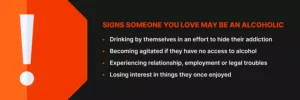
Shiffman, Gwaltney and colleagues have used ecological momentary assessment (EMA; [44]) to examine temporal variations in SE in relation to smoking relapse. Findings from these studies suggested that participants’ SE was lower on the day before a lapse, and that lower SE in the days following a lapse in turn predicted progression to relapse [43,45]. One study [46] reported increases in daily SE during abstinent intervals, perhaps indicating mounting confidence as treatment goals were maintained [45]. The terms “relapse” and “relapse prevention” have seen evolving definitions, complicating efforts to review and evaluate the relevant literature. Definitions of relapse are varied, ranging from a dichotomous treatment outcome to an ongoing, transitional process [8,12,13].
Relapse prevention
Triggers include cravings, problematic thought patterns, and external cues or situations, all of which can contribute to increased self-efficacy (a sense of personal confidence, identity, and control) when properly managed. Otherwise, recovering individuals are likely to make the worst of a single mistake and accelerate back through the relapse process as a result. Fortunately, professional treatment for addiction can improve outcomes for people experiencing the Abstinence Violation Effect.
Critiques of the RP Model

People who attribute the lapse to their own personal failure are likely to experience guilt and negative emotions that can, in turn, lead to increased drinking as a further attempt to avoid or escape the feelings of guilt or failure7. Withdrawal tendencies can develop early in the course of addiction [25] and symptom profiles can vary based on stable intra-individual factors [63], suggesting the involvement of tonic processes. Despite serving as a chief diagnostic criterion, withdrawal often does not predict relapse, perhaps partly explaining its de-emphasis in contemporary motivational models of addiction [64]. However, recent studies show that withdrawal profiles are complex, multi-faceted and idiosyncratic, and that in the context of fine-grained analyses withdrawal indeed can predict relapse [64,65].

In what ways does AA/TSF confer these clinical, public health and economic benefits?
- The abstinence violation effect (AVE) highlights the distinction between a lapse and relapse.
- High-risk situations are determined by an analysis of previous lapses and by reports of situations in which the client feels or felt “tempted.” Appropriate responses are those behaviours that lead to avoidance of high-risk situations, or behaviours that foster adaptive responses.
- We define nonabstinence treatments as those without an explicit goal of abstinence from psychoactive substance use, including treatment aimed at achieving moderation, reductions in use, and/or reductions in substance-related harms.
- Self-efficacy (SE), the perceived ability to enact a given behavior in a specified context [26], is a principal determinant of health behavior according to social-cognitive theories.
Current theory and research indicate that physiological components of drug withdrawal may be motivationally inert, with the core motivational constituent of withdrawal being negative affect [25,66]. Thus, examining withdrawal in relation to relapse may only prove useful to the extent that negative affect is assessed adequately [64]. Recently, Magill and Ray [41] conducted a meta-analysis of 53 controlled trials of CBT for substance use disorders. As noted by the authors, the CBT studies evaluated in their review were based primarily on the RP model [29].

Global self-management strategy involves encouraging clients to pursue again those previously satisfying, nondrinking recreational activities. In addition, relaxation training, time management, and having a daily schedule can be used to help clients achieve greater lifestyle balance. Lapse management includes drawing a contract with the client to limit use, to contact the therapist as soon as possible, and to evaluate the situation for factors that triggered the lapse6.
While some assert that relapse occurs after the first sip of alcohol or use of another drug, certain scientists believe it is a process which more closely resembles a domino effect. Social-cognitive and behavioral theories believe relapse begins before the person actually returns to substance abuse. In order to understand AVE, it is important to realize the difference between a lapse and relapse. Again, many experts agree that a one-time lapse into using drugs or alcohol does not equally relapse. Relapse occurs when this behavior accelerates back into prolonged and compulsive patterns of drug abuse.

Relapse prevention for addictive behaviors
Although non-dieters ate less after consuming the milkshakes, presumably because they were full, dieters paradoxically ate more after having the milkshake (Figure 1a). This disinhibition of dietary restraint has been replicated numerous times [20,28] and demonstrates that dieters often eat a great deal after they perceive their diets to be broken. It is currently not clear, however, how a small indulgence, which itself might not be problematic, escalates into a full-blown binge [29]. In the multifaceted journey of overcoming addiction and living a healthier life, individuals often encounter a psychological phenomenon known as the https://ecosoberhouse.com/ (AVE). It sheds light on the challenges individuals face when attempting to maintain abstinence and how a single lapse can trigger a surge of negative emotions, potentially leading to a full relapse or a return to unhealthy living (Collins & Witkiewitz, 2013; Larimer, Palmer, & Marlatt, 1999). Table 2 shows that most studies reported on the proportion of patients completely abstinent or PDA with fewer studies reporting DDD or PDHD, alcohol consequences or addiction severity and only two reporting the longest period of abstinence.
4. Consequences of abstinence-only treatment
John understands first hand the struggles of addiction and strives to provide a safe environment for clients. Brie works closely with the leadership team to develop and implement effective HR strategies that support our organization’s goals and values. As an HR professional, Brie’s primary focus is on ensuring that our organization attracts and retains the most talented and qualified individuals to help us fulfill our mission of providing compassionate care to those struggling with addiction. With a deep understanding of the unique challenges faced by those abstinence violation effect working in the substance abuse field, Brie is committed to creating a positive and supportive work environment where employees feel valued, respected, and empowered to make a difference in the lives of others. There is less research examining the extent to which moderation/controlled use goals are feasible for individuals with DUDs. The most recent national survey assessing rates of illicit drug use and SUDs found that among individuals who report illicit drug use in the past year, approximately 15% meet criteria for one or more DUD (SAMHSA, 2019a).
- We also take the perspective that relapse is best conceptualized as a dynamic, ongoing process rather than a discrete or terminal event (e.g., [1,8,10]).
- These findings may be informative for researchers who wish to incorporate genetic variables in future studies of relapse and relapse prevention.
- Abstinence rates became the primary outcome for determining SUD treatment effectiveness (Finney, Moyer, & Swearingen, 2003; Kiluk, Fitzmaurice, Strain, & Weiss, 2019; Miller, 1994; Volkow, 2020), a standard which persisted well into the 1990s (Finney et al., 2003).
- Going to the front of the room to grab a new one-day chip after months or years of sobriety makes us feel like complete failures.
- One night, she craves pizza and wings, orders out, and goes over her calories for the day.

Leave a comment